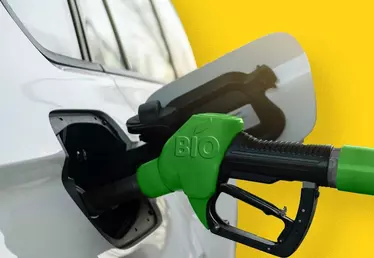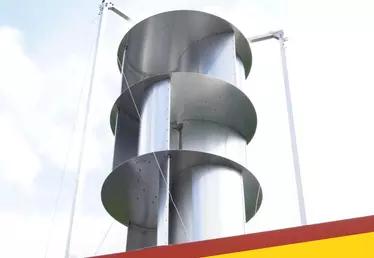

Hero banner custom title
Hydrogen - a sustainable energy for the future
4 min
Generalizing hydrogen – often portrayed as tomorrow’s energy – should enable a drastic reduction in greenhouse gas emissions. The question then becomes how to source and produce this energy variant; and the likelihood that it might become a serious alternative to fossil fuels and/or mass electrification.
More than a fuel source, hydrogen is first and foremost the universe’s most abundant atom, one found in anything ranging from plants to water to hydrocarbons. There has long been talk about using the gas as a fuel source, with industrial designs for a hydrogen engine going back as far as the 18th century. The first plans for a hydrogen-based automobile – dating back to Jean-Luc Perrier’s 1979 invention – are also intriguing given his vision of the element as a sustainable and renewable fuel source that could be harvested using solar panels.
After a few decades of neglect, hydrogen is now experiencing a resurgence of interest and has come to be considered one of the main future sources of responsible energy. It may not be very common as of yet in people’s daily lives but its use is being democratized through a host of new innovations.
Generating hydrogen power
There are currently a number of different ways of producing hydrogen, each with its own environmental impact. In their natural state, hydrogen atoms associate freely with other elements. Isolating them therefore requires a number of chemical processes that can themselves be very polluting. As explained by France’s ADEME National Ecological Transition Agency, “Hydrogen is an energy carrier, not a primary energy source. Its environmental scorecard therefore depends on the particular way it is being generated”.
Today, 95% of the hydrogen produced worldwide is extracted from hydrocarbons, a relatively less expensive process but one with a negative environmental impact.
According to the Quebec government, “Producing one kg of hydrogen from natural gas results in the emission of 9 kg of carbon dioxide (CO2)”. To minimize the pollution caused by fossil fuel-generated hydrogen, the CO2 emitted in this way could be captured and stored. It remains that this is a much less environmentally-friendly solution than “green” or “carbon-free” hydrogen, which happens when electrolysis (i.e. an electric current) is used to separate water (H2O) into oxygen and hydrogen. Of course, to be completely green, the electrical energy involved here must come from a renewable source.
This latter technology has become increasingly interesting to governments seeking to decarbonise their industrial sectors. Hydrogen (largely in its carbonaceous form) now accounts for a mere 2% of the European energy mix but this is destined to increase as the EU develops renewable hydrogen, in part to reduce its dependence on Russian gas. In addition to calling for 10 million tons of hydrogen fuel imports, the REPowerEU plan also envisions the local production of a further 10 million tons of renewable hydrogen by the year 2030, the goal being “to replace natural gas, coal and oil in hard-to-decarbonise industries and transport sectors”.
Using hydrogen power
At present, hydrogen is mainly used in industrial processes (i.e. in refinieries; to produce fertilisers) but this is expected to diversify and expand, for instance, throughout the transportation sector. Germany just launched the world’s first rail line running on hydrogen alone, a breakthrough that should save 4,400 tons of CO2 per annum. Hydrogen automobiles do exist but remain rare given a lack of fueling stations. Hydrogen is also starting to be envisioned for shipping purposes – and even more dramatically, for the aviation sector, which is still 100% dependent on fossil fuels and therefore in dire need of decarbonisation. Note the number of prototypes being witnessed in this latter field, with the first hydrogen-based test flight having taken place in 2008 and Airbus announcing its goal of having hydrogen power at least some of its commercial liners by the year 2035.
Hydrogen’s prospects as tomorrow’s ideal clean energy source
“Green” hydrogen produced via eco-efficient processes has the advantage of generating zero CO2.
Unlike methane-based biogas, green hydrogen is not a greenhouse gas and therefore does not contribute to climate change. Indeed, the sole by-product of its combustion is water. A further advantage of green hydrogen generated via the electrolysis of water is that this can be done locally using locally available renewable energies such as solar or wind energy - thereby enabling a modicum of energy independence with hydrogen’s generalization decoupling a country’s personal and mass transportation sectors from the whims of the global oil market.











